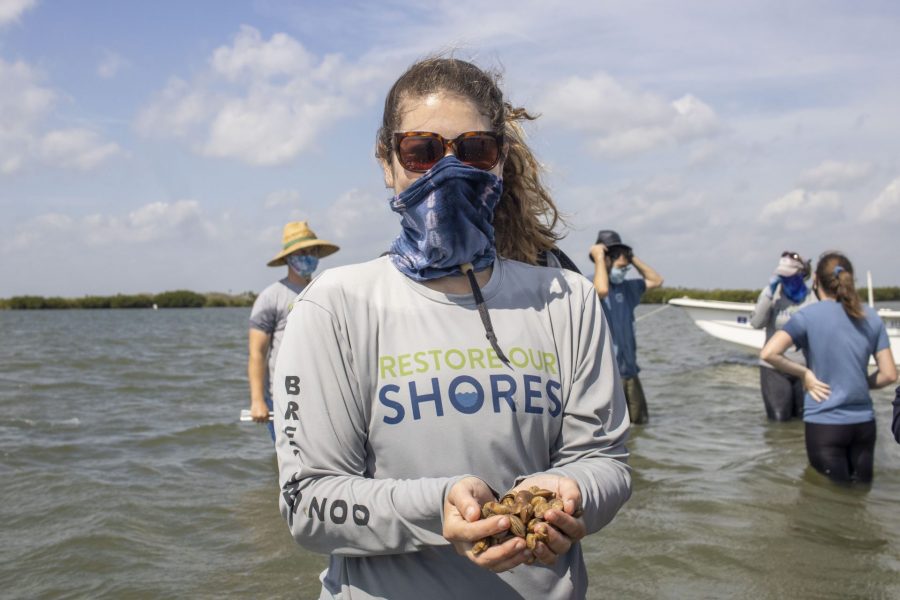

Brevard Zoo’s Restore Our Shores conservation team has finished planting their first 100 clam beds!
The Indian River Lagoon now contains hundreds of thousands of filter-feeding clams, thanks to the efforts of Brevard Zoo’s Restore Our Shores (ROS) team and our partners!
Our team planted 100 clam beds containing between 5,000-10,000 clams throughout the Indian River Lagoon over the last few months. Just under 1 million seed clams so far live in these beds.

One of the “super clams” now in the Indian River Lagoon!
The University of Florida Whitney Laboratory for Marine Bioscience provided these clams, which range in age from 4 months to 12 months old. The laboratory produces these clams from its “super clam” stock of a clam species that is known to be resilient against algae blooms.
The Zoo has been actively involved in lagoon restoration since 2009, when it joined the now-famous “oyster mat” project. The Zoo gradually expanded its efforts to encompass mangroves and aquatic grasses, forming the basis of the ROS program.
Clams are filter feeders that remove nitrogen and phosphorous from the water. These chemicals—which are found in fertilizers and human and pet waste—have been linked to the algae blooms, muck buildup and other environmental issues ailing the lagoon.
The new clam beds are located throughout the three IRL basins— Mosquito Lagoon, Banana River and the Indian River Lagoon— within Brevard, Volusia and Indian River County. Each clam bed is technically at a different site, but the distance between sites varies. Our team recruited waterfront property owners as clam gardeners, which required these homeowners to volunteer their property to house a clam bed as well as their time to learn how to care for the clam bed.
Starting in late January, our team will begin evaluating the sites to see how the clams are doing. These monitoring efforts consist of randomly selecting quadrants within the clam bed and using a sieve to separate out any live clams from the sediment. They then count and measure the clams and note any other species found within the quadrant. The team plans to monitor the clam beds again in April or May.
The hope is to have a smooth monitoring season to gain some useful data from this project for Indian River Lagoon restoration moving forward.
Water samples will also be taken during clam spawning season, which happens intermittently during May through October, to see if there are clam larvae – and if so, how much has been generated. Clams rely on a change in water temperature to trigger spawning, so they can potentially spawn at other times of year depending on the climate.
This project was funded by the State of Florida through the St. Johns River Water Management District. ROS is currently seeking more funding to continue planting and monitoring clam beds. Our team is considering adding them to our gardening program, which currently focuses on oysters. Clams are more sensitive to lower salinities than oysters, however, so the range of possible clam bed sites would be significantly smaller. Once funding is secured, our team will seek out more waterfront property owners as clam gardeners.
Use these links if you’re interested in:
Brevard Zoo is an independent, not-for-profit organization that receives no recurring government funding for our operating costs. Your generous support enables us to continue to serve our community and continue our vital animal wellness, education and conservation programs.